Welcome to another week of Fall Stitch School. This week, we’re studying long and short stitch. This stitch is troublesome for many embroiderers, but I’m hopefully going to show you that it is not any harder than any other stitch and it can be quite fun to fill an area in. Long and short is very useful not only in crewel embroidery, but thread painting as well. Embroiderers can achieve beautiful shading affects with this stitch. It really is worth a little practice to improve your technique and gain confidence in your abilities.
The basic idea behind long and short stitching is simply to vary the starting and ending points of the stitches so that you can get a smoother color shift and to be able to easily stitch contours. I’ve made three sample shapes with long and short to show you a couple ways to use it. The first thing to do in crewel embroidery and (thread painting too) is to outline your shapes with split stitch or split back stitch.
First shape is a basic box. The first row of stitches is composed of some longer and some shorter stitches. For the rows following, you use only long stitches (except at the end of the shape, of course), but this isn’t a precise science, so the stitches will have some natural variation in length anyways.
Notice my stitches aren’t made perfectly even with each other. You will see that it hardly matters, in fact maybe it’s better because it’s so important to vary the placement. I went ahead and added another row of this color. It’s very important to always, always bring the needle UP through the stitches and never down into them.
The next row of stitches is started by bringing your needle up in the color above.
Again you see I haven’t made a perfect row of stitches. It looks a little odd in this contrived example, but in a real project, it will look fine with the variation. Start the next row bringing your needle up through the color above. This picture shows how far in you need to bring the needle up – it can be surprisingly far in.
The next shape is a flower petal. Another thing to keep in mind, is that it’s important to work from the outside edge inward. This example shows how you may need to change the angle of your stitches to get a nice shape.
Some of the shorter stitches end up tucked under the longer stitches since the stitches are converging toward a single point and there won’t be room for them all.
The most challenging (and fun!) thing to do is fill complicated shapes that bend around curves. This is particularly useful when filling animal shapes.
To move around a curve, you make stitches with varying starting and end points (this is really important for the making a nice filling), but the angle of the stitches changes a bit as you move around the stitch. The stitches are placed quite far up into the row of stitches above. Only a little part of each stitch is left showing, so you get a nice progression of stitches at different angles as you move around the curves. If you make the stitches a little shorter you will get a really smooth curve.
I have a small example from a project stitched with long and short using crewel wool. You can see how I have made contours around the shape of the animal
I hope this lesson was helpful in demystifying long and short stitching just a little bit. Give it a try! It’s not so hard as it seems.

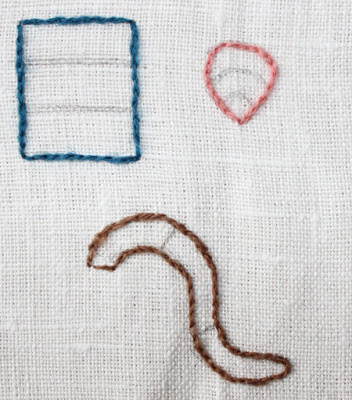
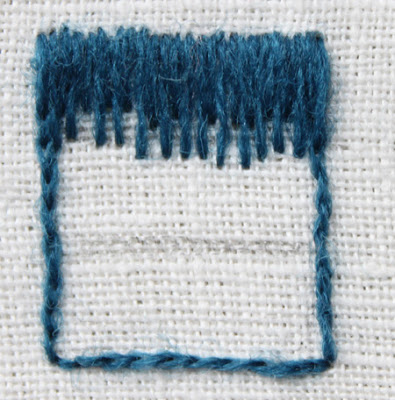

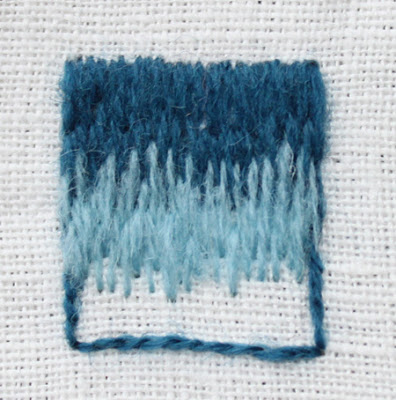
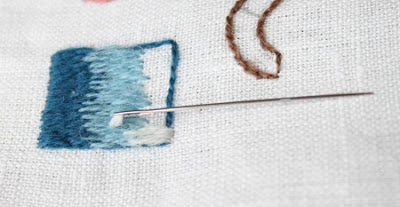
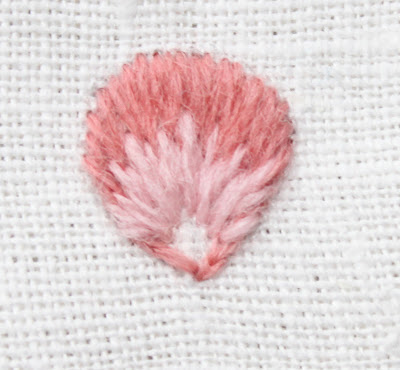
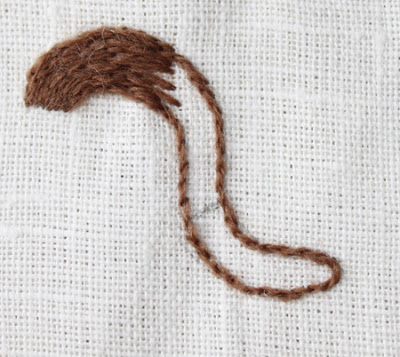
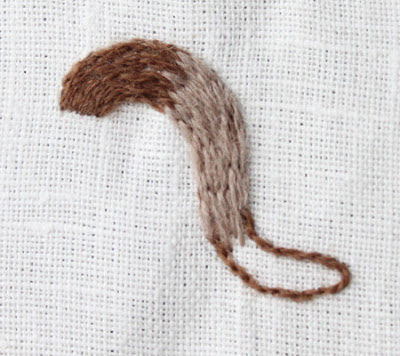
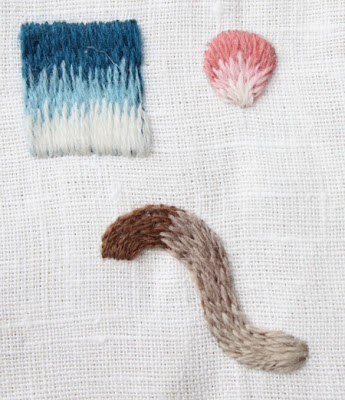
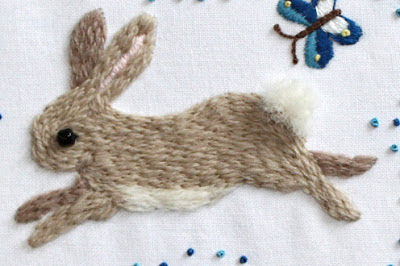

wow…super lesson as always…thanks so very much…it is so much fun!!
Thanks for posting all these lessons! I learn so much each and every time!
I'm so glad you posted this! I'm about to embroider a big sea otter themed piece for my bathroom and wasn't sure how to do the sea otters. I think I found my answer right here
I am confused that you say bring the needle UP through the stitches as all my books, four of them including the royal needlework school and The Readers Digest one say to stitch DOWN into the stitches from above. All the online examples who do tutorials show your way but older examples do not. Why is there this discrepancy and why should I ignore my books? I'm honestly not sure what I should be doing!
There is some really poor long and short stitching going on and I want to get it right. But it is difficult to find out what is right. I can't see that it matters that much. Does it?
I think Anonymous that it doesn't really matter what way you use. What does matter is the look you are going for. If you stitch down while splitting the plies of the thread your fill area will compact and not stand up from the fabric as much but stitching up through the plies while much harder to do allows the thread to be lifted from the fabric creating a much softer and loftier appearance. The same principles apply with a regular shortened split stitch also. You can see an pictorial example here to show you the lift that is achieved if you take the time to split from underneath http://www.needlenthread.com/2012/02/split-stitch-direction.html